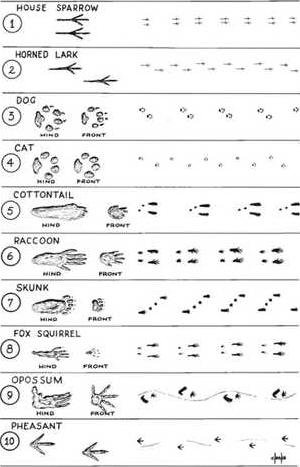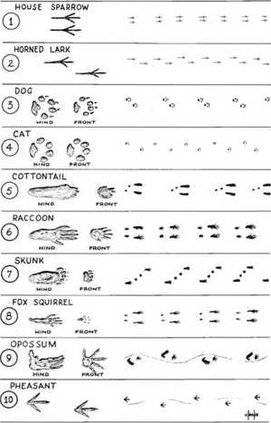Now that the trees and bushes have lost their leaves, and a blanket of snow covers the ground, it’s a great time to get out and spot wildlife. While in Barton County, we don’t have to go far -- the nearest field, trail, or windbreak -- because of it’s proximity to water and food, the Cheyenne Bottoms is guaranteed to be a good place to see native species and start identifying tracks.
“We see a ton of tracks around KWEC, everything from coyote to rabbits to birds to mink to raccoons, and I’m sure I’m missing some,” said Jean Aycock, Education Director of the Kansas Wetlands Education Center. “It’s a lot of fun checking out the new tracks when we’ve got fresh snow - we never see the rabbits hang out on our sidewalks, but the tracks prove that they’re there.”
A trip through the nature belt could lead to the unfolding of a story. Follow the tracks of a mouse or rabbit until they end, and try to determine where it went or what happened to it. Does it change directions often? Why?
Some of the small mammals that call the Cheyenne Bottoms home include several species of mice and rats, both the eastern cottontail and black-tailed jack rabbits, voles, moles, opossums, armadillos, squirrels, gophers and bats. Some medium sized creatures include foxes, weasels, minks, badgers, skunks and racoons. A few larger species are coyotes, bobcats, and both mule and white-tailed deer. And then there are the multitude of bird life too. While shorebirds aren’t around in the winter, species like bald eagles and hawks can be spotted hunting during the winter.
When you go, dress in layers, and bring a camera along. While most cell phone cameras don’t have the required shutter speed to get great wildlife photos, they can take great still shots, and for getting up close details of the tracks you find.
Photo tips
Local photographer Karole Erikson and her husband, Jay Farmer, have won awards for their nature photography, with many subjects coming from their own back yard as well as the Cheyenne Bottoms wildlife area. Erikson recommends asking KWEC employees Pam Martin, Curtis Wolf and Aycock for their advice about where and when wildlife can be spotted in the area if there is something specific you are looking for.
Cameras with DSLR technology, like Nikon and Canon, work differently than cell phone and iPhone cameras. With DSLRs a wide variety of photos, including wildlife, and be shot. Tracks in the snow could indicate a good place to locate a blind, which Erikson recommends. Patience for this sort of shot is required, But there is still plenty of fun to be had with still life photography, which cell phone cameras are made for.
“With still life, you need to focus on the most important subject in your composition,” Erikson said. “But, if you have something lighter, like snow, and you are using an iPhone camera, it will be overexposed. Touch focus on the brightest point of the picture in this case.”
The two use several different software developing apps, like Photo Shop Express, Snapseed and Pro HDR among others, to achieve the same effects they would in an old school darkroom. These programs can be accessed for free or a few dollars through the phone’s app store, Erikson said. While they can take the photos back to their home to work on, they also can work directly from the phone in many instances, allowing immediate uploads to social media and blog pages.
Tracking down an outdoor adventure





